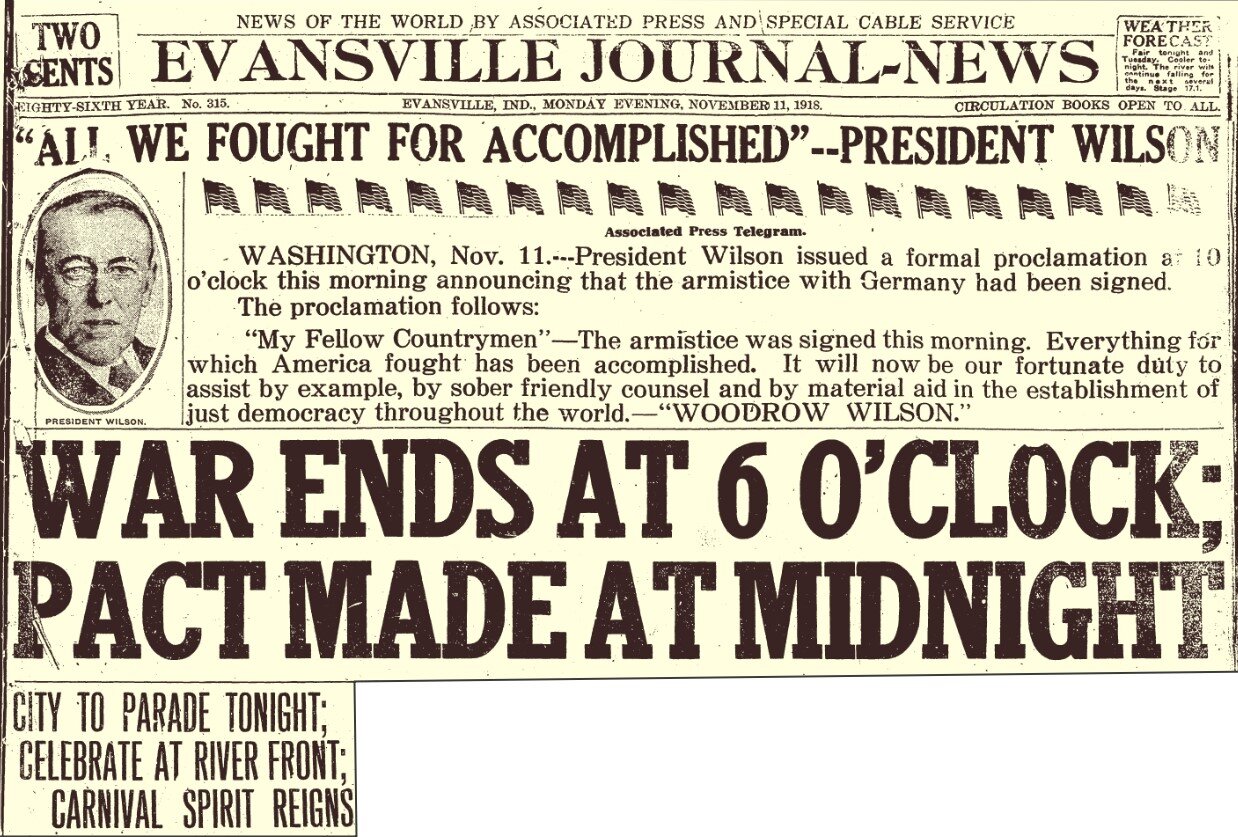Hope for Brighter Days
As we leave 2020 behind and head into 2021, most of us are probably hoping for a brighter new year without the dread Covid-19 haunting our steps with its facemasks, loss of income, business closures, illness, and most tragically its horrific loss of life and without the constant ringing of political rhetoric in our ears. (If only there were a vaccine against the latter.) Certainly 2020 will be a year long remembered, if not for positive reasons.
Looking back, the people of Evansville and the country most likely had similar hopes as 1918 turned to 1919. 1918 had seen the United States full-fledge entry onto the battlefields of Europe during World War I—though Evansvillian James Bethel Gresham became the country’s first combat fatality a year earlier—and had experienced many-fold loss of life in the French countryside. Though victory in the war was raucously celebrated as factory whistles sounded and a huge parade occurred on Main Street with Armistice Day (today’s Veterans Day) on November 11, the sobering fact of more than 100 dead service people from Vanderburgh County and over 116,000 nationwide remained a grim reality.
1918, and particularly the month of October, had also seen a ravage many-fold deadlier than the war—that is the influenza pandemic that savaged the globe. It is estimated that 50 million died worldwide, including 675,000 in the United States at a time when the country’s population was under a third of what it is today. Though quarantining, wearing masks and proper ventilation were emphasized in an effort try to stop the spread of the flu, service people returning to the United States from the war (and to other parts of the world) spread the disease at an exponential rate. In October, the most deadly month for the virus in the country, approximately 195,000 Americans died—on average over 6,000 per day.
In Evansville, and in the state, schools, churches, theaters, picture play houses, and public meetings were closed or halted. The daily number of local cases was reported in the Evansville Courier newspaper and quarantine cards were placed on the doors of houses with sick individuals. Local healthcare facilities—Protestant Deaconess Hospital, St. Mary’s Catholic Hospital, Walker Sanitarium and the Marine Hospital—admitted virus suffers and a special Red Cross influenza hospital was set-up in the Elks Home across from the Hotel McCurdy on First Street with an ongoing challenge of maintaining enough trained nurses as many contracted the flu while caring for their patients.
As the city and country left 1918 and entered 1919 with memories of the war still raw and the pandemic moving into a third—if not as deadly wave—early in the year, Evansvillians joined a global hope for brighter days ahead. Today, most of us share that same hope as we begin our journey into 2021.
Thomas R. Lonnberg
Curator of History
Caption 1: In this image, members of the volunteer American Red Cross Motor Corps—established during World War II—deliver a flu patient to the temporary influenza hospital at the Elks Home on First Street.
Caption 2: On November 11, 1918, Evansvillians read this exciting headline announcing the end of the World War—later known as World War I.


